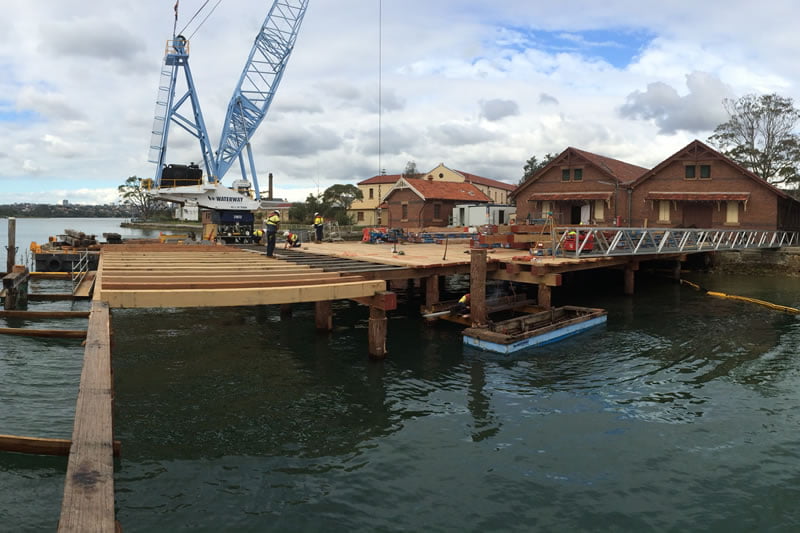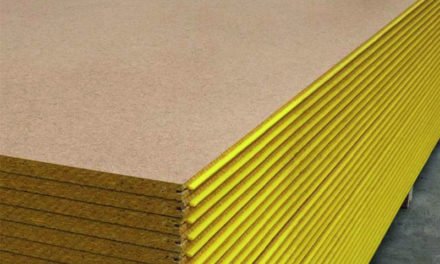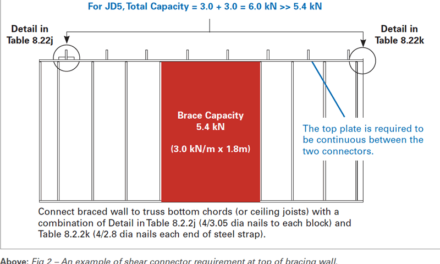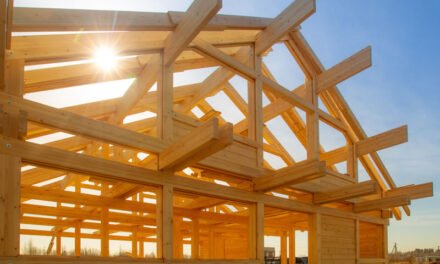Despite fires and flood, Coffs Harbour Hardwoods continues to deliver high-quality specialist timbers to customers ranging from bridge builders to aesthetics-driven homeowners.
From its Glenreagh village base, west of the city, Coffs Harbour Hardwoods is ideally situated for the multiple product lines it produces. Its range of hardwood products includes power poles and green sawn structural hardwoods and the company runs a dry mill plant that produces a range of kiln dried seasoned products, such as quality flooring, decking, cladding and joinery products, including stair components.
But, like everyone else on the NSW North Coast, they have had an interesting time with the weather over the past few years. “It’s been tricky since the fires,” says Ryan McCarthy, sales and marketing manager at Coffs Harbour Hardwoods, “The issues we had with the fires were followed by a lot of wet weather over the last year. We have had our battles with getting the resource due to the crazy weather events. But we still have beautiful timber here that we can offer.”
In addition to losing a lot of resource to fires over Black Summer, the biggest spanning 150,000 hectares, several of the forests where the cutting teams normally conduct their sustainable operations have been rendered inaccessible recently due to ongoing wet conditions and flooding over the past six months, which has contributed to supply problems.
So the famously diverse business known for its ability to supply larger, longer timbers is having to look at options. “Government and larger infrastructure companies are big customers for us,” McCarthy says. “It’s been a bit difficult because we haven’t been able to get as much wood into the yard as we’d like. The wood we do have is being used to meet our contract obligations, but we do what we can to keep everyone happy.”
While regular customers are familiar with the issues around weather impacts on pole supply, not every customer is as up to date on the challenges in the market. “A lot of customers still want the same things they’ve been used to buying, but now we and other suppliers are saying ‘you might need to look at other species’, and those species perform just as well, if not better,” says McCarthy.
“For some of our raw material, we have to value add to suit the most profitable products because the resource is limited, and our procurement sources have had difficulty in getting out into the bush to harvest because of the wet weather.”
Accordingly, the McCarthy family business has been offering alternatives: different sizes as well as species. McCarthy says, “They’re calling up and asking for one thing and they might end up with something a little different, and a lot of the time that doesn’t matter. Because some are not necessarily after a set product, they have an idea of what they would like, we can usually work with them to persuade them in a certain direction if we have something available that will work well.
“Often, when they are looking for a particular size, we can machine or rip something bigger down to that size. It’s pretty easy to make the smaller sizes – but not when they want something a bit larger!”
McCarthy expects the pole business to continue to flourish and further improve once the weather fines up and logging schedules can return to normal. “But there are going to be other areas of the business that might be affected for longer, especially our joinery type timbers,” he says. “They’re slow-drying. We put them in the yard and season them to dry before they go in the kilns, they can take 12 months or more to complete that phase.
“There’s a delay in that process now that is likely to lead to a shortage, especially for things like stairs. People want a beautiful staircase, and they want to use single species for the treads and the stringers. Stringers need to be long spans of timber. The treads are not necessarily an issue, because we can cut those in shorter lengths, but the stringers go from 4-5m on a lot of jobs and they are coming out of bigger trees. That’s where there will probably be an issue down the track.”
Engineered solutions like glue laminating and finger jointing that can be used in other areas with the same type of strength requirements may eventually be more common in stair material, “But our current customers want the aesthetics of a single piece of timber,” McCarthy says. “The joinery timbers will be a matter of getting access to the limited resource that is available, this could dictate how they are processed in the future. We’ve really got to manage that well to keep that supply chain going to satisfy that part of the market.”
Finding markets
Every cloud comes with a silver lining, and for Coffs Harbour Hardwoods, it’s been the Covid building boom. “Demand for timber has definitely increased,” says McCarthy. “A lot of people have more money available now that they cannot travel. It has definitely been an upside: there’s a lot of quoting going on, there’s a high demand for really good jobs out there, it’s just a matter of marrying the right ones up with what we’ve got available.
“People are spending a lot of money on their own properties because they can’t do their usual trip to Bali or wherever. Instead, they are putting that money into renovations. Across Australia, there is a lot of spending going on, and that’s good for business.”
Large projects in public spaces have also been ramping up for the team. “We’ve been supplying to some of the construction groups working around Coffs and the North Coast as well as other infrastructure projects around the country and over in New Zealand,” McCarthy says. “We’ve even supplied some big sections of timber in Sydney on the Pyrmont Bridge, which is undergoing structural refurbishment at the moment.
“It’s funny, because we have jobs here there and everywhere and when the timbers leave our facility, we don’t always know where they’re going. We will supply to a customer and that is the last we know about it. But others we do hear about and can take more of an interest in because they’re in a unique location, like Pyrmont or Spectacle Island, or there’s something exciting about where the timbers end up.”
And then there are the public jobs with government departments overseeing bridges and wharfs. “We have ongoing work with these types of jobs because that’s our specialty,” says McCarthy.
“They know we tend to cut bigger, longer sections of those higher-quality timbers. They might be able to get wood cheaper somewhere else, but the quality’s not always there, so they do not tend to muck around. It’s not worth taking any risks when it comes to the higher-end jobs anyway.”
After the recent fires and floods, there are also a lot of local council areas needing timbers to rebuild damaged or lost infrastructure, on top of age-related upkeep. “One single council area has a couple of hundred bridges that it maintains and quite a large percentage needs to be upgraded,” McCarthy says. “The ones on our main roads have a regular repair schedule that keeps them in good order, but there are a lot of smaller forest bridges that got washed out during the heavy rains and the locals need them back in working order.”
Despite working with larger organisations, Coffs Harbour Hardwoods still recognises its regional roots. “We do the full standard range of timber products and we’ve started doing tool handles as well,” says McCarthy. “Axes, shovel handles, hammer handles… all that sort of stuff.
“We’ve branded them as Cattle Dog Tool Handles and it’s a line that fits nicely into our area. The cheaper imported ones you get sometimes don’t last that long, so we’re producing good spotted gum ones that will stand up to proper rugged use and last a long time.”
For more information or enquiries, visit www.coffshardwoods.com.au or phone (02) 6649 2006.
Image: Coffs Harbour Hardwood timbers used for wharfage at Spectacle Island, Sydney.












